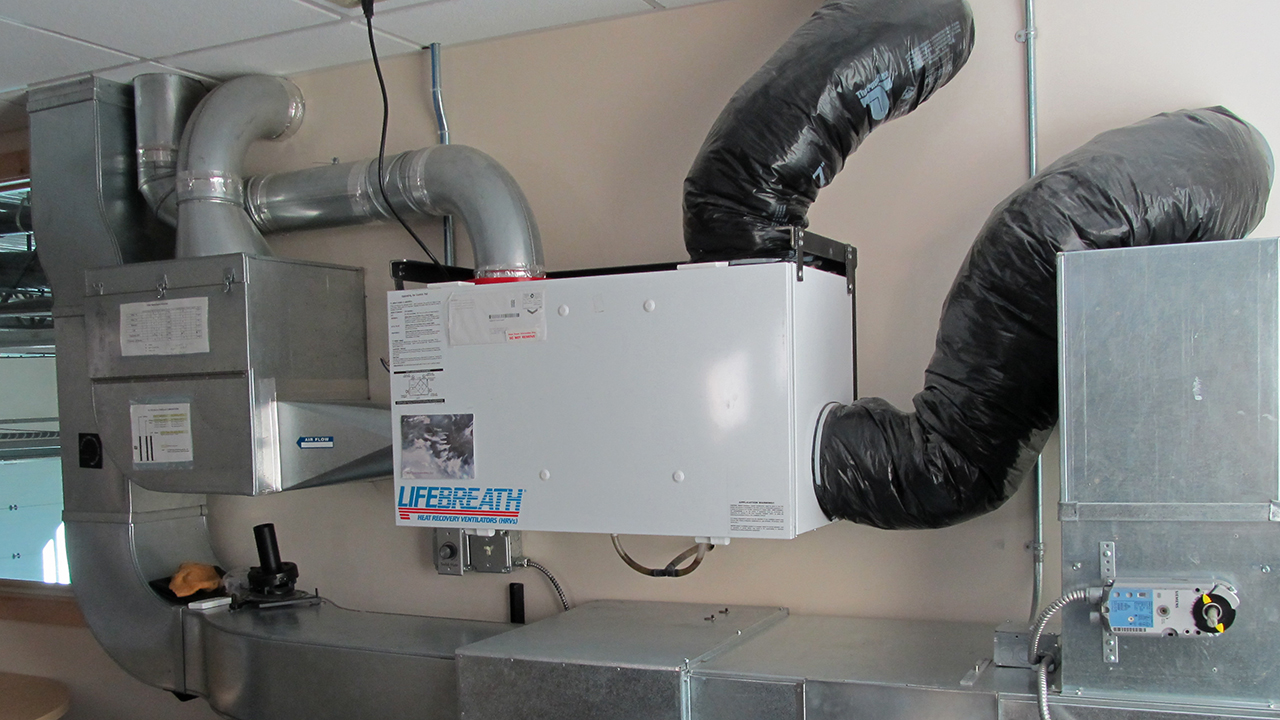HRV Explained: What Every Homeowner Must Understand
Wiki Article
Exploring the Benefits of Heat Recovery Ventilation for Energy Efficiency in Houses
Heat Recovery Ventilation (HRV) systems supply home owners a sensible approach to boosting energy effectiveness. By reclaiming warmth from outbound air, these systems can substantially lower heating and air conditioning costs. Additionally, they give a constant supply of fresh air, boosting indoor air quality and comfort degrees. As home owners think about lasting options, understanding the subtleties of HRV systems ends up being increasingly vital. What variables should one examine prior to making such a financial investment?Recognizing Heat Recovery Ventilation Equipments

Exactly How HRV Boosts Indoor Air Quality

Energy Cost Savings: The Economic Benefits of HRV
Making the most of power performance, heat recovery ventilation (HRV) systems provide substantial economic benefits for homeowners. By recovering and reusing warmth from exhaust air, HRVs markedly decrease cooling and heating expenses. This modern technology can bring about energy financial savings of approximately 30%, depending on climate and use patterns. House owners frequently notice decreased utility expenses quickly after setup, making HRVs an economically sensible financial investment with time. In addition, numerous regions supply rewards or rebates for energy-efficient upgrades, better enhancing the monetary appeal. As power costs remain to rise, the cost-effectiveness of HRVs becomes increasingly clear. On the whole, the consolidation of HRV systems not only advertises energy effectiveness yet also adds to lasting monetary cost savings for homes.The Ecological Influence of Heat Recovery Ventilation
A substantial ecological benefit of heat recovery ventilation (HRV) this systems depends on their capability to minimize total energy intake. By reclaiming warmth from exhaust air and transferring it to inbound fresh air, HRV systems reduce the need for energy-intensive home heating and cooling methods. This decrease in energy demand adds to reduce greenhouse gas emissions, as much less nonrenewable fuel source is called for to preserve comfy indoor temperature levels. Furthermore, HRV systems enhance interior air quality by efficiently exchanging stale air with fresh exterior air, minimizing dependence on mechanical cooling systems that can damage the setting. Generally, the implementation of HRV systems supports sustainable living practices and lines up with international initiatives to fight climate modification by promoting power efficiency in domestic settings.
Selecting the Right HRV System for Your Home
How can home owners assure they select the best heat recovery ventilation (HRV) system for their needs? First, they should analyze their home's size and format, as these variables affect air flow requirements. Next, reviewing the system's effectiveness ratings is essential, as greater scores suggest better efficiency and energy cost savings. Home owners ought to additionally take into consideration installment and maintenance expenses, comparing various brand names and models for value. In addition, it is very important to examine sound degrees, as some systems run even more silently than others. Consulting with heating and cooling professionals can provide customized suggestions based upon details home conditions. Finally, checking out individual reviews and service warranties can assist in making an informed choice, guaranteeing that the selected HRV system efficiently boosts interior click for more air high quality and energy performance.Regularly Asked Concerns

Just how Typically Should I Tidy or Preserve My HRV System?
The frequency of cleansing or keeping a warmth healing air flow (HRV) system normally depends upon usage and environmental aspects. Typically, it is suggested to carry out maintenance every 6 months to ensure peak efficiency and air top quality.
Can HRV Systems Aid Decrease Moisture Levels Indoors?
HRV systems can effectively minimize indoor moisture degrees by exchanging Your Domain Name stale, humid air with fresh, drier air from outdoors. HRV Heat Recovery Ventilation. This procedure aids preserve a well balanced indoor setting, enhancing comfort and preventing moisture-related concerns
What Is the Lifespan of a Common HRV System?
The life-span of a regular heat recovery ventilation (HRV) system differs, normally lasting between 10 to 15 years. Regular upkeep can expand its efficiency and operational life, guaranteeing peak efficiency throughout its use period.Exist Any Type Of Sound Interest In HRV Systems?
Noise worries with HRV systems can emerge, especially from fan operation. Numerous modern-day systems are made to reduce sound degrees, ensuring they run silently while keeping effectiveness, which resolves potential disturbances in living atmospheres.Can I Install an HRV System Myself, or Do I Need a Specialist?
The private contemplated whether to mount the heat recovery ventilation (HRV) system personally or work with a specialist. Usually, while do it yourself installation is feasible, experience assurances proper performance and compliance with neighborhood building ordinance, boosting system performance.Report this wiki page